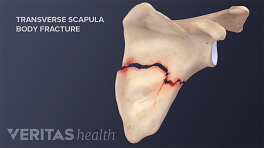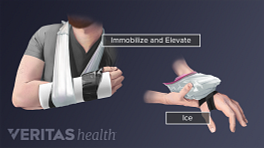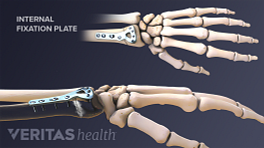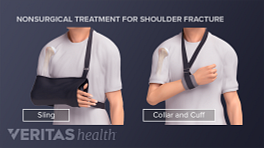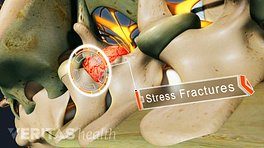A bone fracture may or may not be obvious. There are a range of signs, symptoms and treatment options for fractures.
In This Article:
- Bone Break vs. Fracture
- Signs, Symptoms, and Treatment for Bone Fractures
Signs and Symptoms of a Bone Fracture
The signs and symptoms of a bone fracture will depend on the severity and location of the injury. Generally, the symptoms include:
- Pain
- Swelling
- Difficulty moving
- Bruising
- Altered normal limb alignment
Additionally, the injured area may be tender or feel warm. In the case of an open fracture, the bone can be seen from the skin. Sometimes, a person may not realize they have a fracture.
Bone Fracture Treatment
Once the doctor has confirmed the exact location and type of fracture—usually through an x-ray—he or she will develop a treatment plan. There are several different ways to treat a bone fracture.
- Immobilized cast. A plaster or fiberglass cast will be placed around the fracture once the bone has been aligned. The bone cannot move when in this type of cast, which promotes proper healing.
- Functional cast or brace. This type of cast allows for limited but controlled movement, and is only applicable to some, usually minor, fractures. Sometimes a fracture is severe enough that it requires more than a cast or brace.
- External fixation. A surgeon will insert screws and wires into the bone, which then attach to a metal bar on the outside of the skin. This device stabilizes the bone while it heals. Once the fracture heals, the removal of the screws and external device can usually be done in a doctor’s office without anesthesia.
- Open reduction and internal fixation. A surgeon will realign (reduce) the broken bone into its normal position and then affix metal plates or special screws to hold it in place. In some cases, a metal rod will be inserted down the center of the bone to stabilize it. The screws and plates are typically left in the bone once the fracture has healed, but may be removed in some situations.
- Traction. This treatment uses weights, pulleys, and ropes to gently realign a broken bone. Traction is typically used as a temporary measure in the event that a person must wait to have surgery.
Traction and fixation techniques are most often used when the bone cannot be held in place by a cast or brace.
The healing time of bone fractures will depend on the individual, their underlying bone health, their activity level, and the location and severity of the injury.


